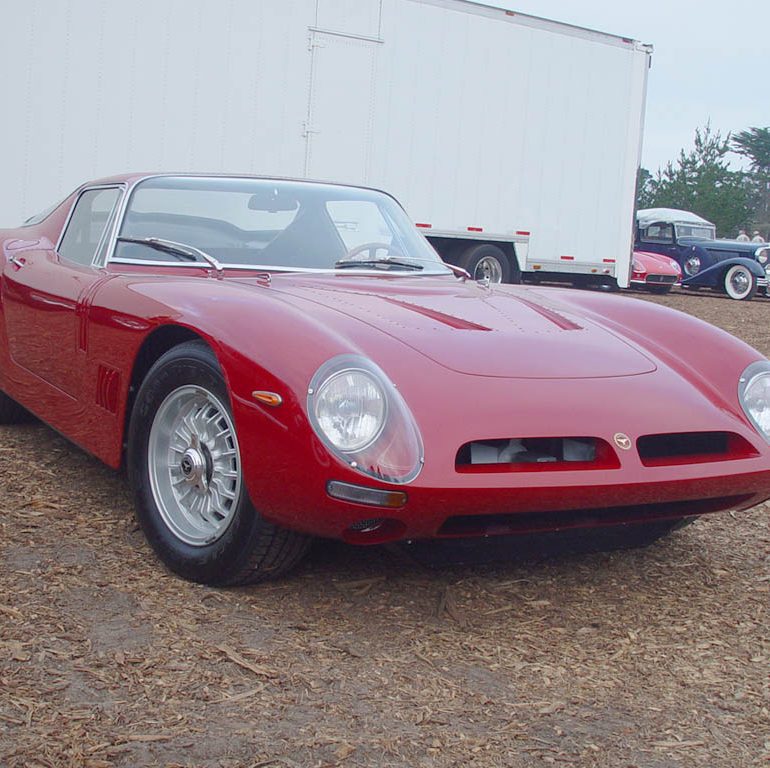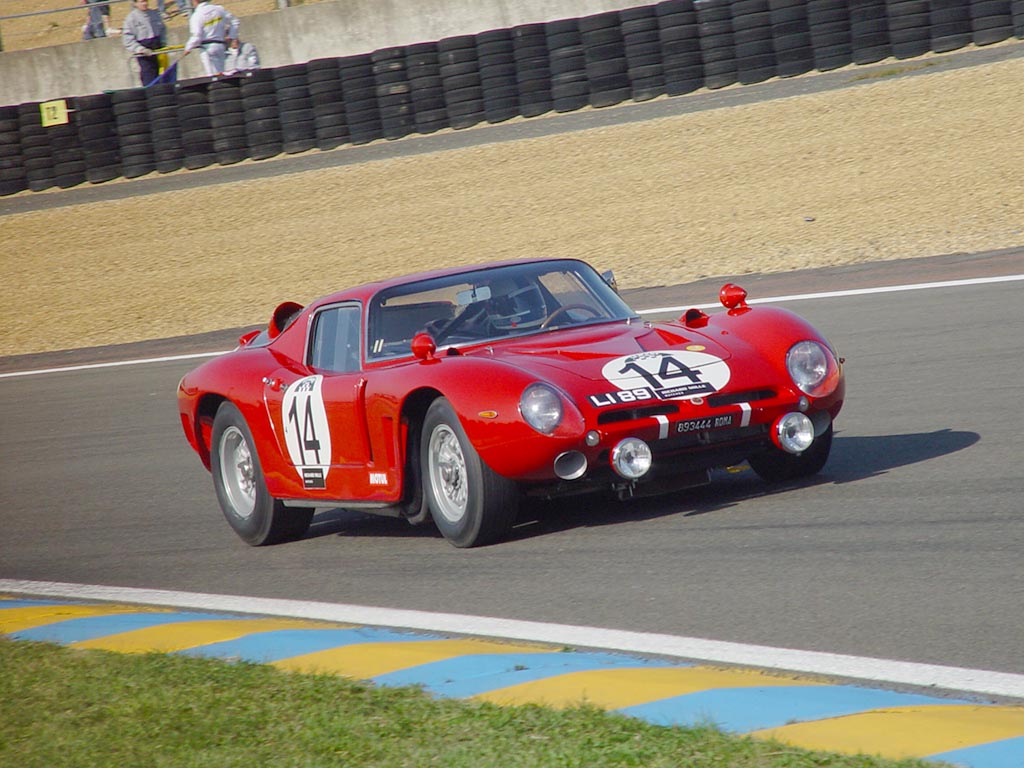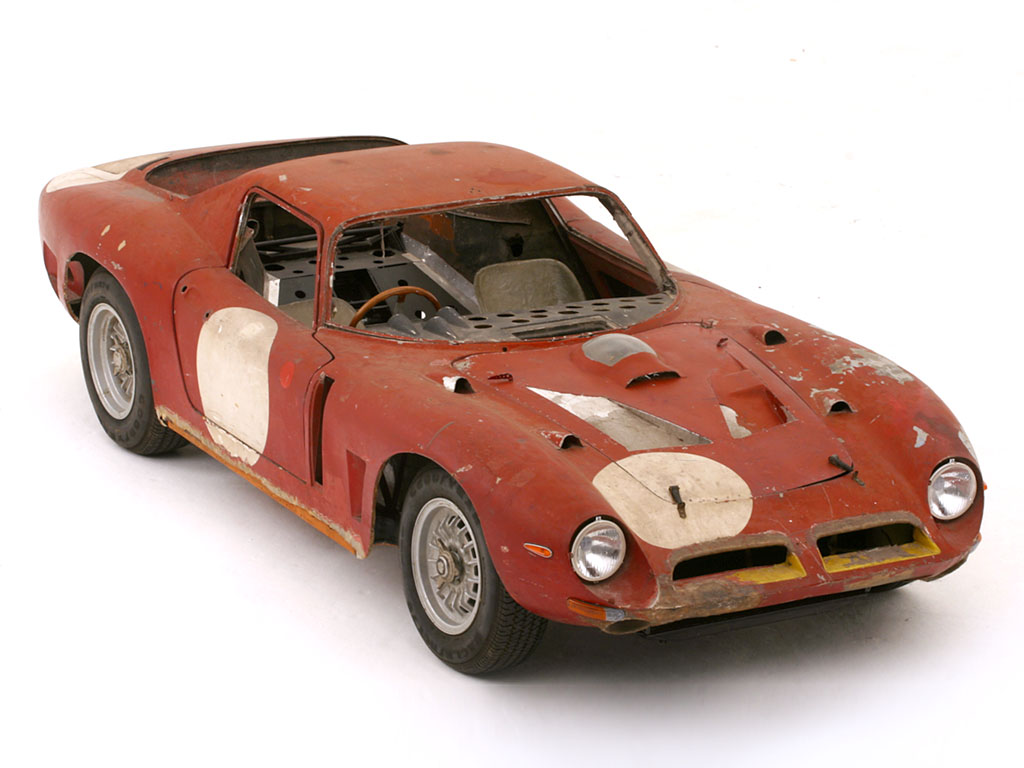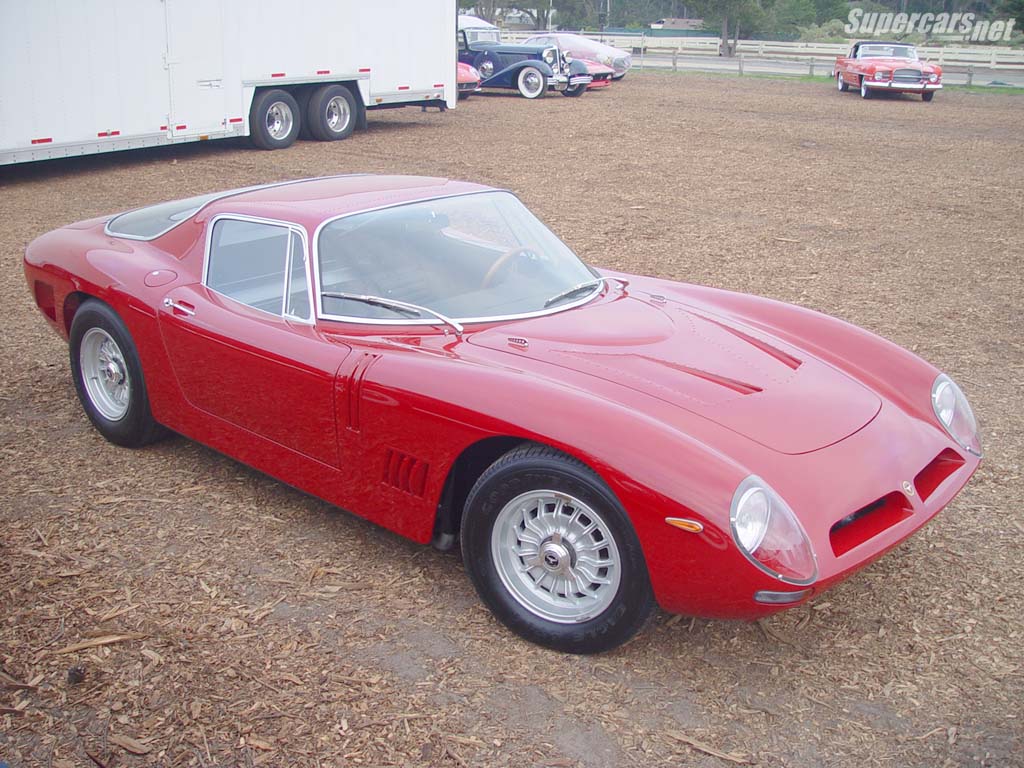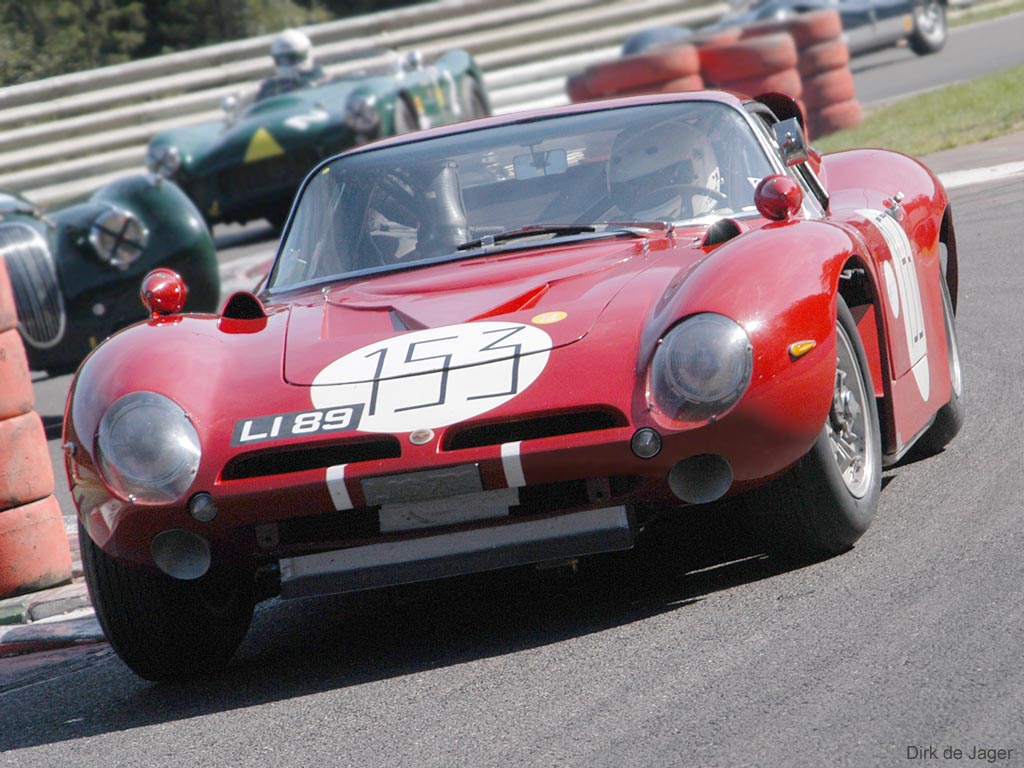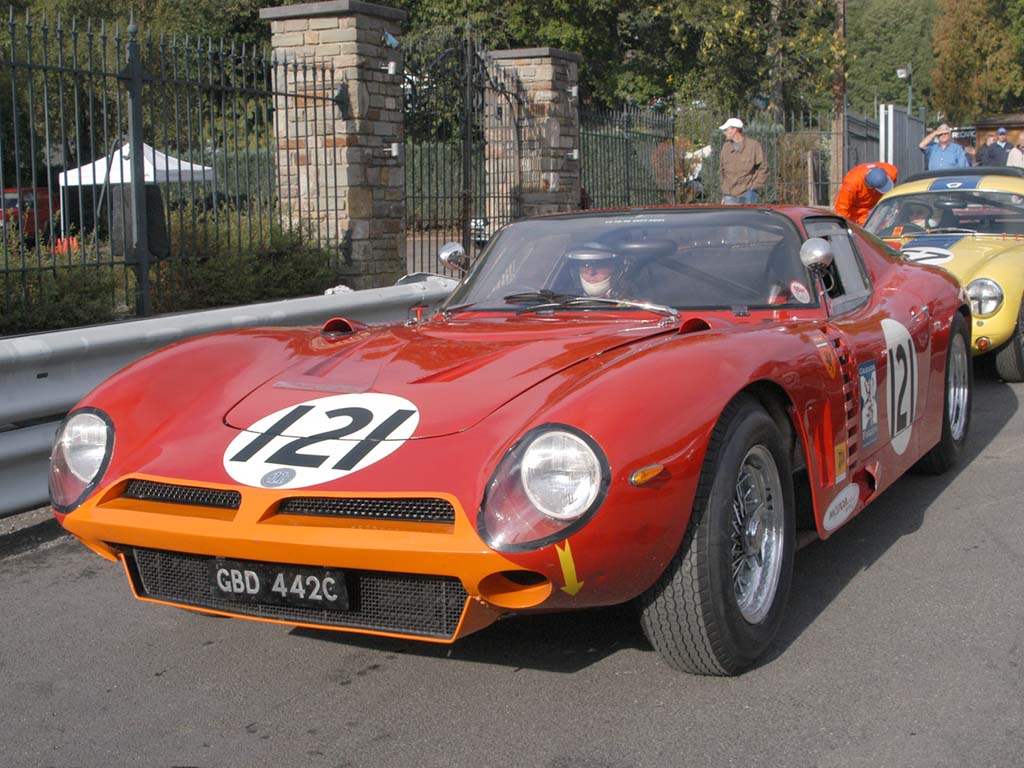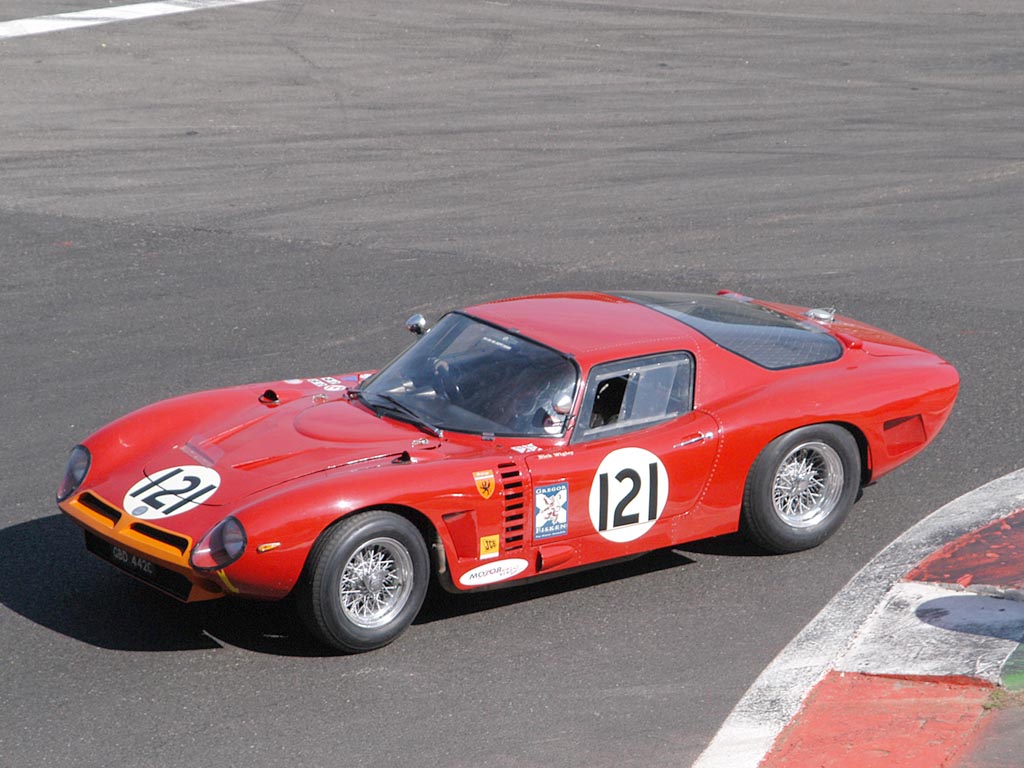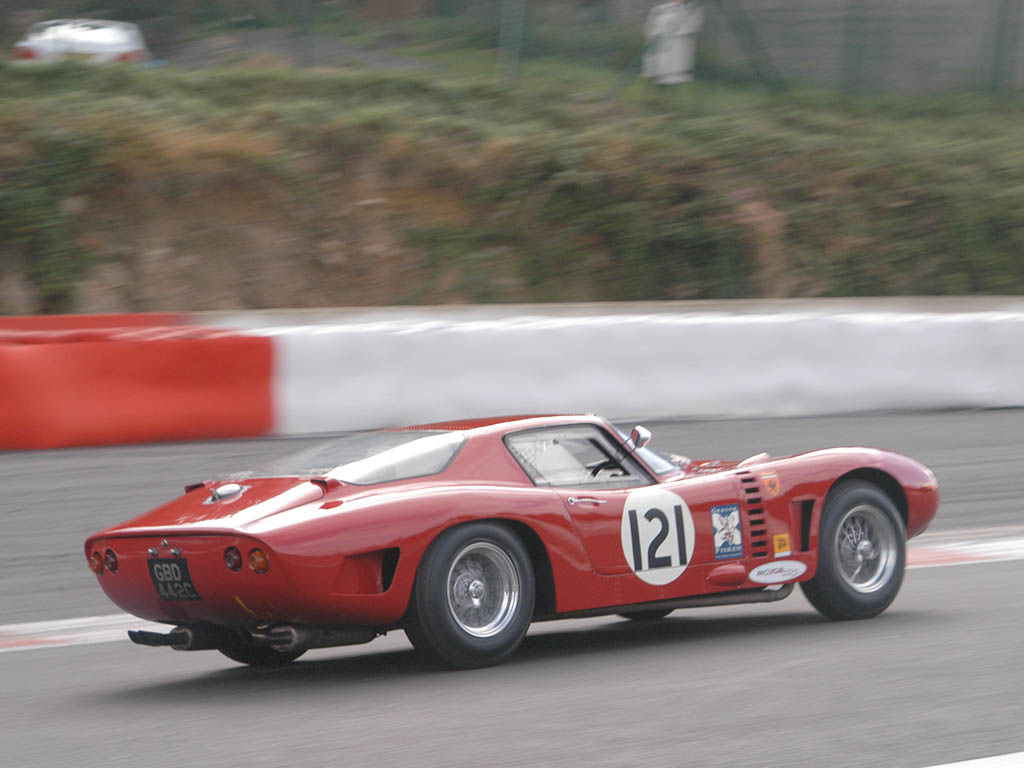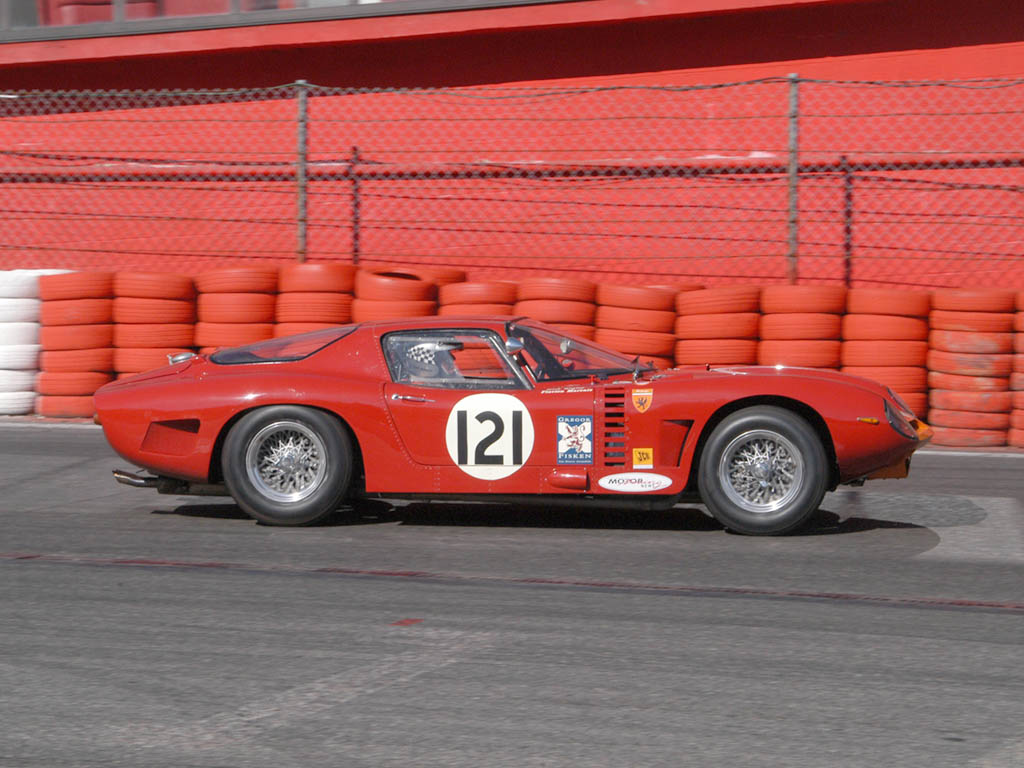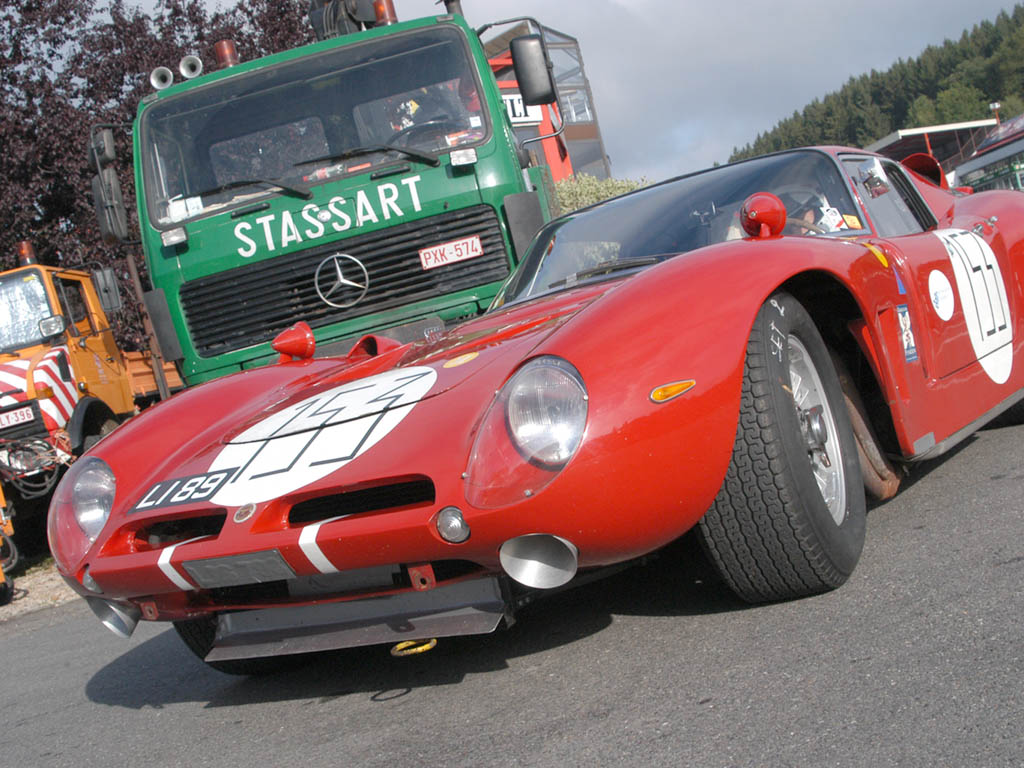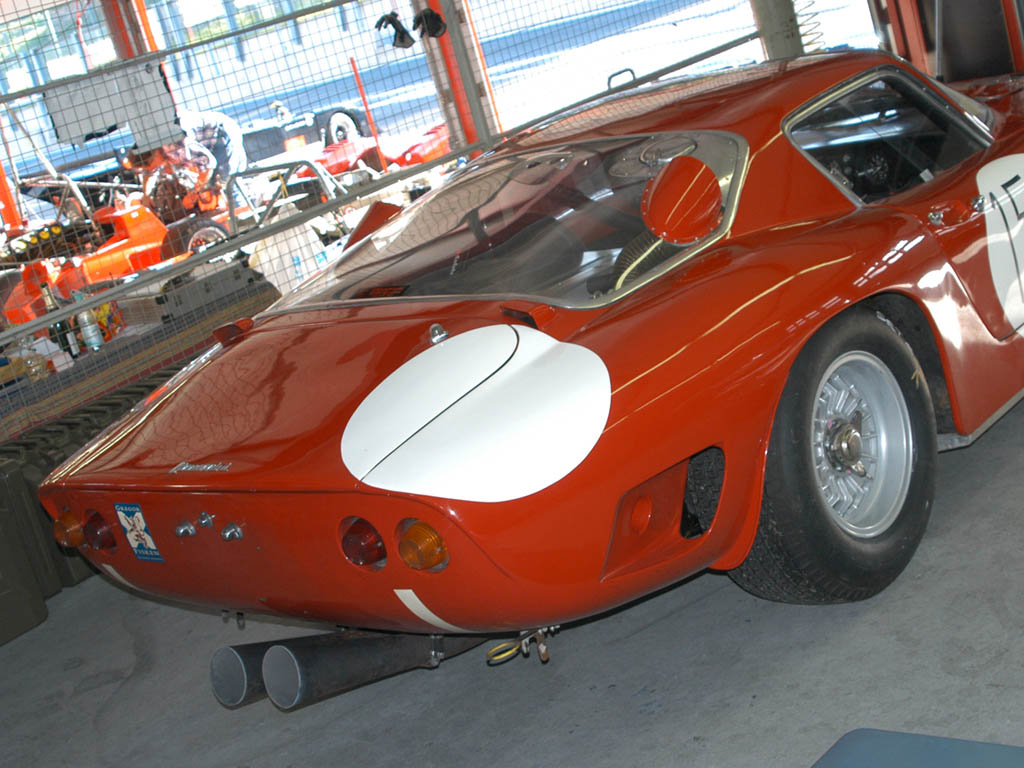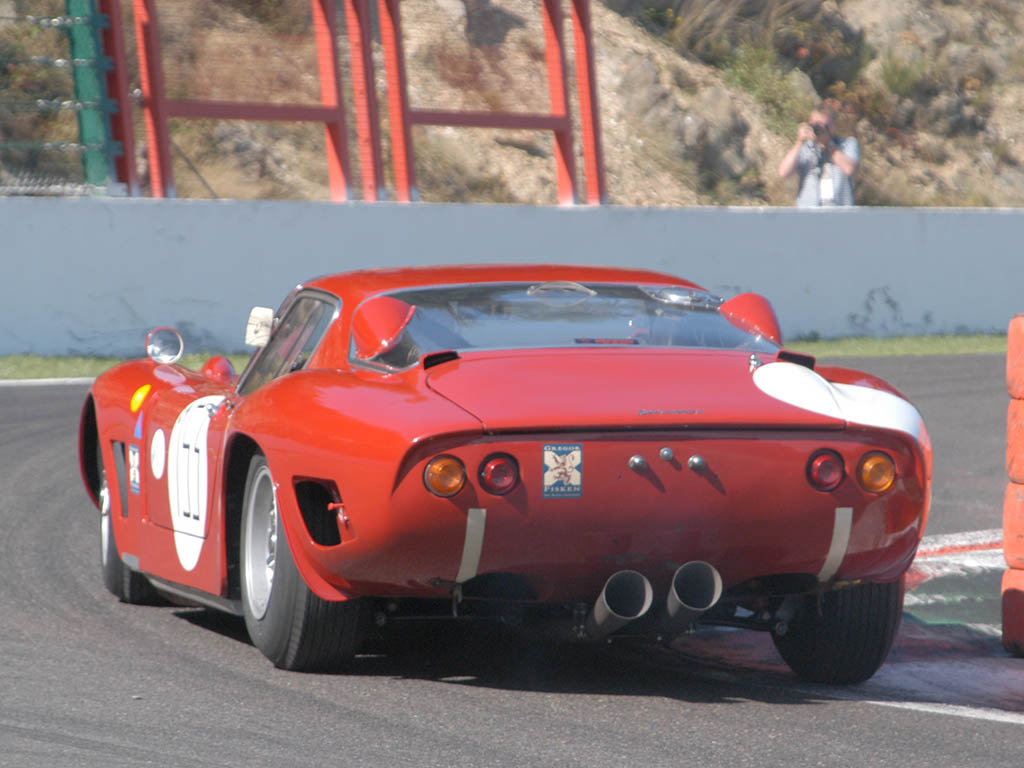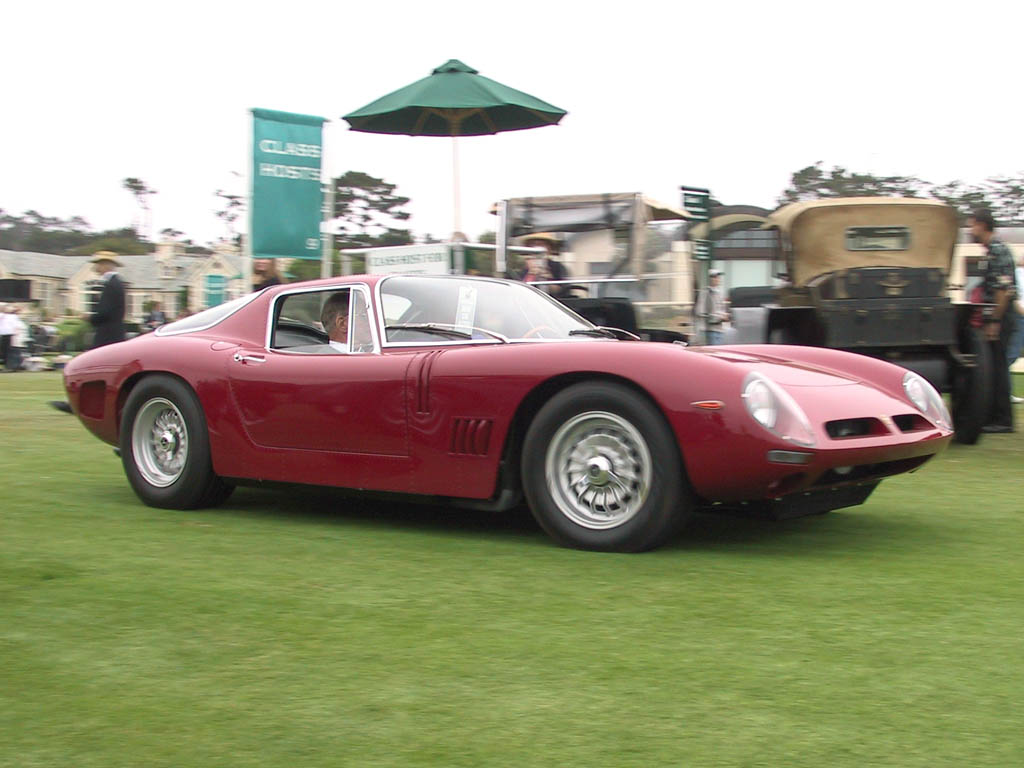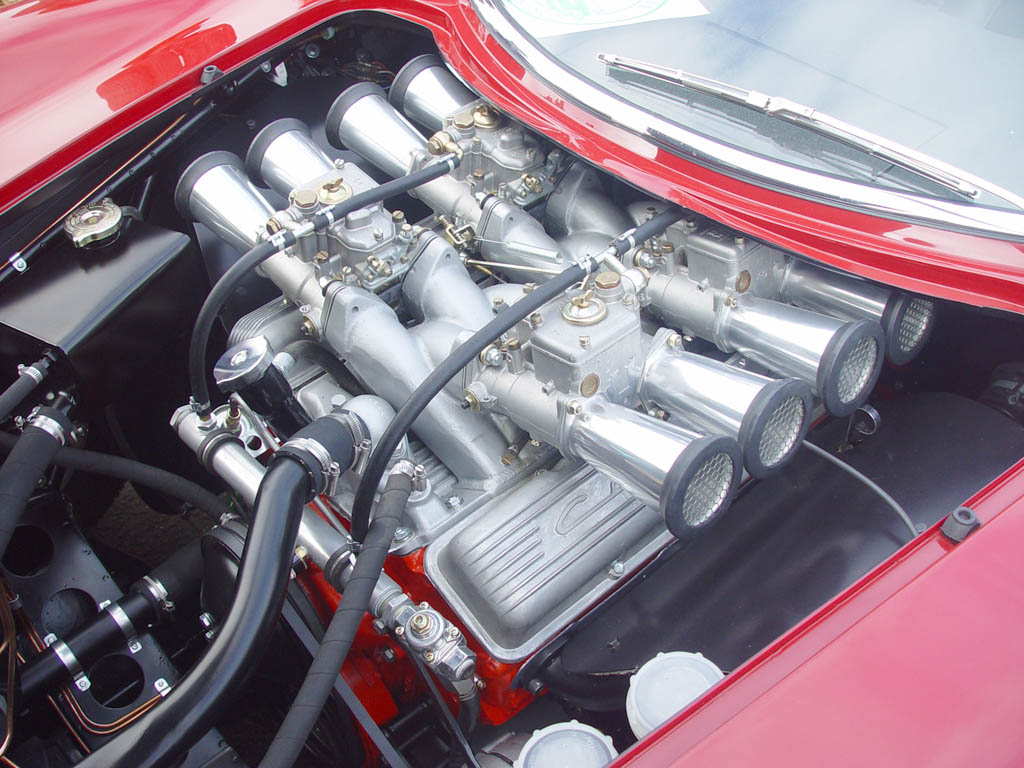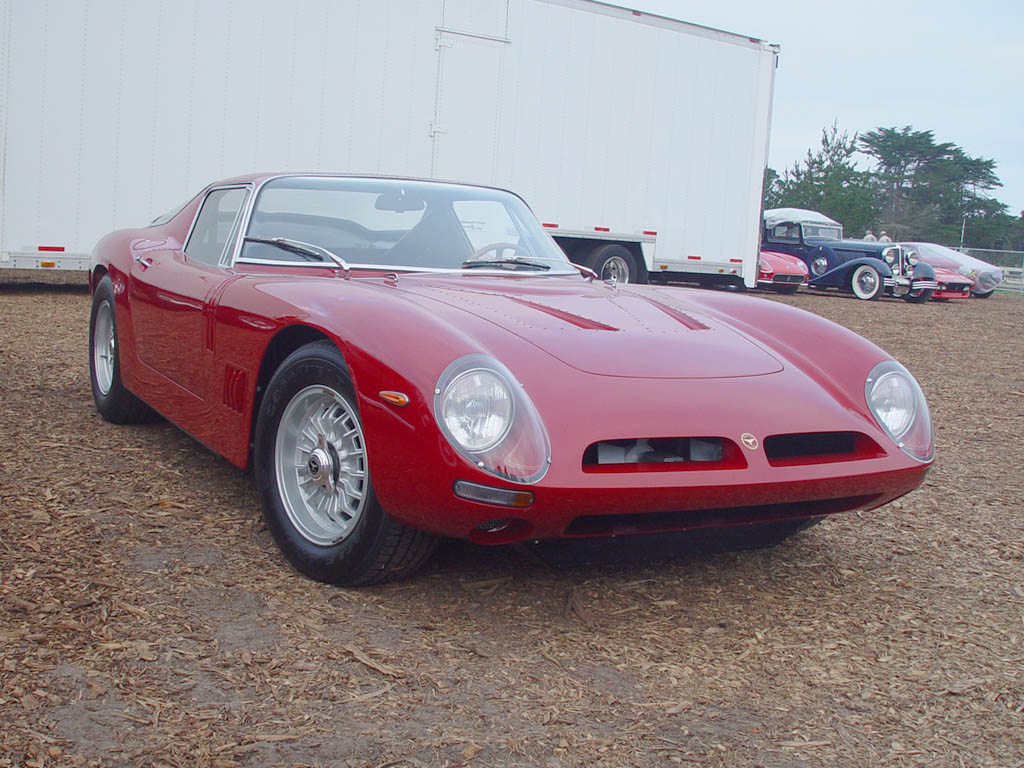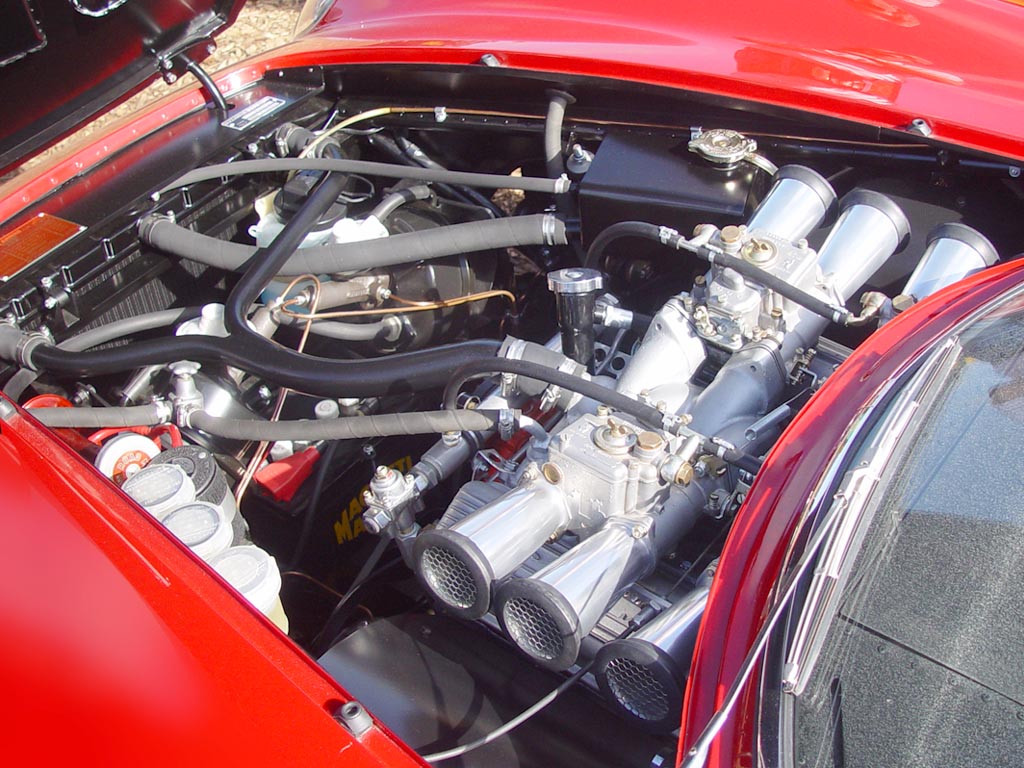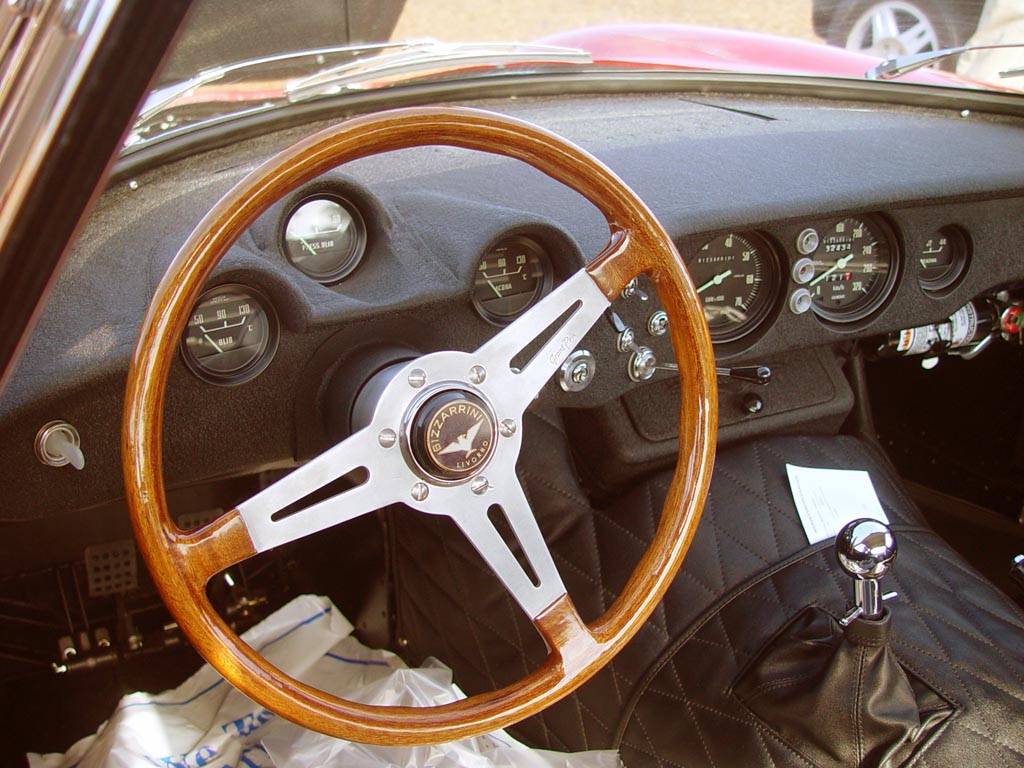1965 Bizzarrini 5300 GT Corsa
Bizzarrini always had a keen sense for racing. Despite working for both Ferrari, then Lamborghini, and contributing to their best models, the 5300 was the first car fully credited to his name . Eventually, the very same companies he worked for would become key competition. As an underdog, Bizzarrini knew what he was up against, but he never stopped trying.
The 5300 project stems from a long and complicated relationship between Bizzarrini, Giugiaro at Bertone and Renzo Rivolta. These three worked together to create the Iso Rivolta 300, a flagship car for Iso, having a welded sheet steel monocoque and Corvette V8. Due to sporting nature of the chassis and the reliability of its American power, Bizzarrini wanted to go endurance racing, but Rivolta who owned Iso did not agree.
Fortunately, by 1963, Rivolta was finally convinced to finance the development of a more sporting Iso Rivolta. The result was the precursor to the 5300 GT, the Iso Grifo.
Both Bizzarrini and Bertone worked extensively on two different cars which debuted at the 1963 Torino Motor Show. To satisfy Rivolta, both a competition Grifo A3/C and a 2+2 Grifo A3/L were displayed. These cars had distinctly different bodies and different design objectives, but were in many ways the same. Both Grifos were styled by Giugiaro at Bertone, used the same chassis and the same engine. Immediately after the successful show, both versions of the Grifo were put into production.
All of the chassis were built in Bizzarrini’s workshop at Livorno. Iso provided the engine and other components. Drogo manufactured and delivered bodies for the competition cars to Livorno for final assembly. The 2+2 grand tourer A3/Ls, were finished at Bertone where Bizzarrini shipped bare chassis.
Bizzarrini really considered the A3/C to be his own. So much so, he registered the mark Grifo and put his own badges on some of the cars. After the death of Renzo Rivolta in 1965, the relationship between Bizzarrini and Iso ended with only 25 Grifos built. Bizzarrini then sued Iso to acquire the necessary parts and finish 50 cars himself at Livorno. Without Iso, all cars after chassis #0224 were named Bizzarrini 5300 GTs and finally Bizzarrini’s name graced his design.
The Iso Grifo AC3/C and Bizzarrini 5300 GT were very much the same product. When Bizzarrini took over full production, he had all the bodies assembled by Carrozzeria BBM instead of Drogo. Small design details were introduced on the BBM body including different door handles, rear lights and front signals.
Engineering
The Grifo and 5300 where based on the Iso Rivolta 300 chassis. It was a welded sheet steel tub having a fully independent suspension by double wishbones in the front and a De Dion axle in the rear. These same characteristics were lent to the Grifo and 5300, albeit in a shorter chassis.
Unlike all Italian sports car tradition, Bizzarrini used an American engine for the 5300, specifically the Chevrolet V8. With this engine came a host of benefits: it was ample in power, cheap to purchase and maintain, simple to tune and best of it all, it would run reliably all day and all night. After moderate tuning, the engine provided 365 bhp, keeping it well ahead of Ferrari’s 275 GTB.
Using lessons learned with the Ferrari 250 GTO, Bizzarrini pushed the heavy V8 far back into the engine bay as possible. When combined with the side-mounted gas tanks the weight balance of the 5300 was very close to a perfect, even during different fuel loads. One major drawback to this engine location was the intrusion of interior space which put the pedals at about mid-engine. Being so close to the engine, road going 5300s got very hot in the cockpit despite added interior ventilation.
Like a race-car, the interior space seemed planned as an afterthought. Both the speedo and tach were located centrally with temperature and oil pressure gauges in front of the driver. Furthermore, very little insulation was provided to stop heat and noise from reaching the occupants.
The Corsa 5300
Bizzarrini offered the 5300 in two variations. As a strada, more interior appointments, including ventilation, were standard . For the racing client, or adventurous customer, Bizzarrini offered the competition version with a tighter steering ratio, hot engine, lightweight body and no seat belts! Over the years several changes were made to this Corsa version with some cars getting individual specification. For this reason, no two cars are exactly alike.
Highlighting the Corsa was a 405 horsepower (302 kw) version of the Corvette V8. The additional power was result of four twin choke side draught Webers mounted on a cross flow intake manifold. Other subtle engine modifications included polished ports, aggressive camshafts and a free-flow exhaust.
Thin gauge aluminum was used on all the competition cars. The body and other lightweight measures helped shed 110 lbs off the car.
In 1966, Bizzarrini made better use of the relaxed rules made for prototype cars. Several drastic modifications to the 5300 included a fiberglass body which helped reduce the weight to just 1,196kg with driver and fuel. At the end of the season, Bizzarrini installed the seven liter Chevrolet engine in chassis BA4 0106, one of his fiberglass cars. With 500 horsepower (370 kw), these were the most powerful 5300s, and could attain 210 mph (330 kph) down the Mulsanne straight.
On the Track
Due to homologation requirements, the Iso Grifo debuted on the track as a prototype. This classification put the Grifo against Ford’s seven liter GT40 and Shelby’s Cobra. The Grifos excellent aerodynamics, powerful engine, independent suspension and reliability made it an excellent endurance GT car and prototype sports for that matter.
1964 was very much a development year for Bizzarrini. The team managed to attain 14th place at Le Mans and finished 19th at the Nurburgring 1000km. The next season started out on a rough note, with a car getting destroyed at both Sebring and Daytona. After the first two races, older cars were used. At Le Mans, a class victory was scored with the retirement of the seven liter GT40s. This first in class highlighted the racing achievements achieved with the Grifo.
The following two years, Bizzarrini raced the 5300 sporadically throughout the season. Unfortunately no major victory was achieved despite several extensive modifications including fiberglass bodies and seven liter engines. The seven liter car was unable to race the 1967 Le Mans because it did not pass scrutineering.
Unfortunately, finances were the main problem hindering the 5300 GT’s racing program. Bizzarrini had a limited budget, but was one of the few independents who could make such remarkable machines, attain respectable results in motor sport and sell the very same product to the US and abroad.
image: http://www.supercars.net/graphics/christies.gif

image: http://www.supercars.net/graphics/christies.gif

BA4 0106, the seven liter 1967 LeMans car, remained in the ownership of Prototipi Bizzarrini S.p.A until 1971, when the company filed for bankruptcy. The entire inventory of Prototipi Bizzarrini S.p.A. was thus offered by the Tribune of Pisa in order to recover outstanding debts. By this time the car had been stripped of its running gear (presumably for use in another project) and it was merely a rolling chassis and body still in Le Mans guise. It was purchased direct from the tribune as parts (a copy of the invoice is available) and until earlier this year it remained in long term storage. It must be noted that because the car was sold as parts the invoice does not display a chassis number, furthermore the chassis number on the car was at some point altered and the last two digits are incomplete.
After 32 years of hibernation, Christie’s is proud offered this extremely significant and unmolested project. The car was largely complete with the most notable missing items being the perspex rear and side windows, prop shaft and the drive shafts. It was auctioned at Christie’s December sale of Motor Cars in London with an estimate of 400,000 GBP ($670 000 USD). Unfortunately the high bid was unable to meet the reserve price.
Sources & Further Reading
Biro, Pete. ‘Iso Corsa A3-GT’.Sports Car Graphic. Sept 1964.
Cornil, Etienne. ‘Three Iso Grifos’.Sporting Motorist. Sept 1964.
Goodfellow, Winston. Iso Rivola: The Men, The Machines. Giorgio Nada Editore: March 2002.
Hales, Mark. ‘GTO vs Bizzarrini’. Octane, Issue 01. July 2003.
Olczyk, Philippe et al. Bizzarini, the genius behind Ferrrari’s Success. World Print Ltd: 2001
1965 Bizzarrini 5300 GT Corsa Gallery
See full 1965 Bizzarrini 5300 GT Corsa Gallery here
In Detail
| engine | Chevrolet Corvette V8 |
| position | Front Longitudinal |
| aspiration | Natural |
| valvetrain | 2 Valves per Cyl w/Pushrod Acutuation |
| fuel feed | Quad Weber 45 DCOE |
| displacement | 5359 cc / 327.0 in³ |
| bore | 101.6 mm / 4.0 in |
| stroke | 82.5 mm / 3.25 in |
| compression | 10.5:1 |
| power | 302.0 kw / 405.0 bhp @ 6000 rpm |
| specific output | 75.57 bhp per litre |
| bhp/weight | 331.97 bhp per tonne |
| torque | 494.87 nm / 370 ft lbs @ 3600 rpm |
| redline | 6200 |
| body / frame | Aluminum Body over Sheet Steel Semi-Monocoque w/Tubular Steel Superstructure |
| driven wheels | RWD by Salisbury Hypoid Differential w/Limited Slip |
| front tires | 6.00Lx15 Dunlop R7 |
| rear tires | 7.25Lx15 Dunlop R7 |
| front brakes | Dunlop Discs w/Vacuum Assisst |
| f brake size | mm / in |
| rear brakes | Inboard Dunlop Discs w/Vacuum Assisst |
| r brake size | mm / in |
| front wheels | F 38.1 x 17.8 cm / 15.0 x 7 in |
| rear wheels | R 38.1 x 22.9 cm / 15 x 9 in |
| steering | Burman Recirculating Ball |
| f suspension | Unequal A-Arms w/Coil Springs,Koni Telescopic Dampers, Anti-Roll Bar |
| r suspension | De Dion Axle w/radius Arms, Coil Springs,Koni Telescopic Dampers |
| curb weight | 1220 kg / 2690 lbs |
| wheelbase | 2446 mm / 96.3 in |
| front track | 1410 mm / 55.5 in |
| rear track | 1430 mm / 56.3 in |
| length | 4369 mm / 172.0 in |
| width | 1730 mm / 68.1 in |
| height | 1110 mm / 43.7 in |
| transmission | Borg Warner 4-Speed Manual |
| gear ratios | 2.54:1, 1.92:1, 1.51:1, 1.10:1, :1 |
| top speed | ~305.8 kph / 190.0 mph |
| 0 – 60 mph | ~5.0 seconds |
| 0 – 100 mph | ~13.5 seconds |


